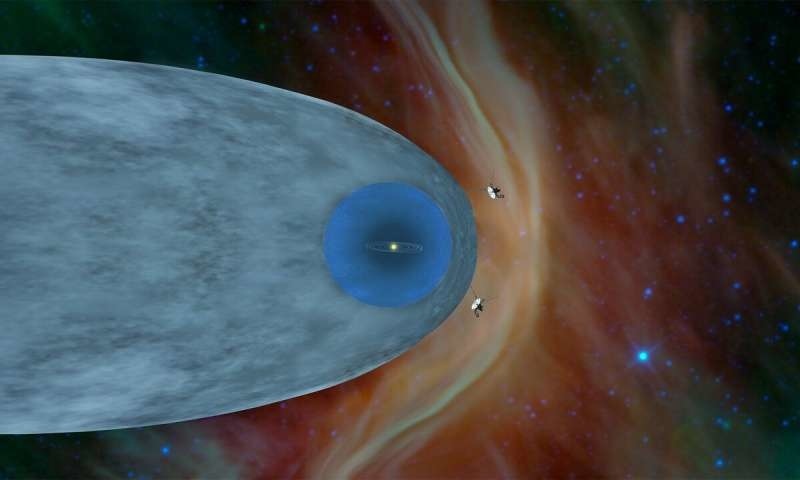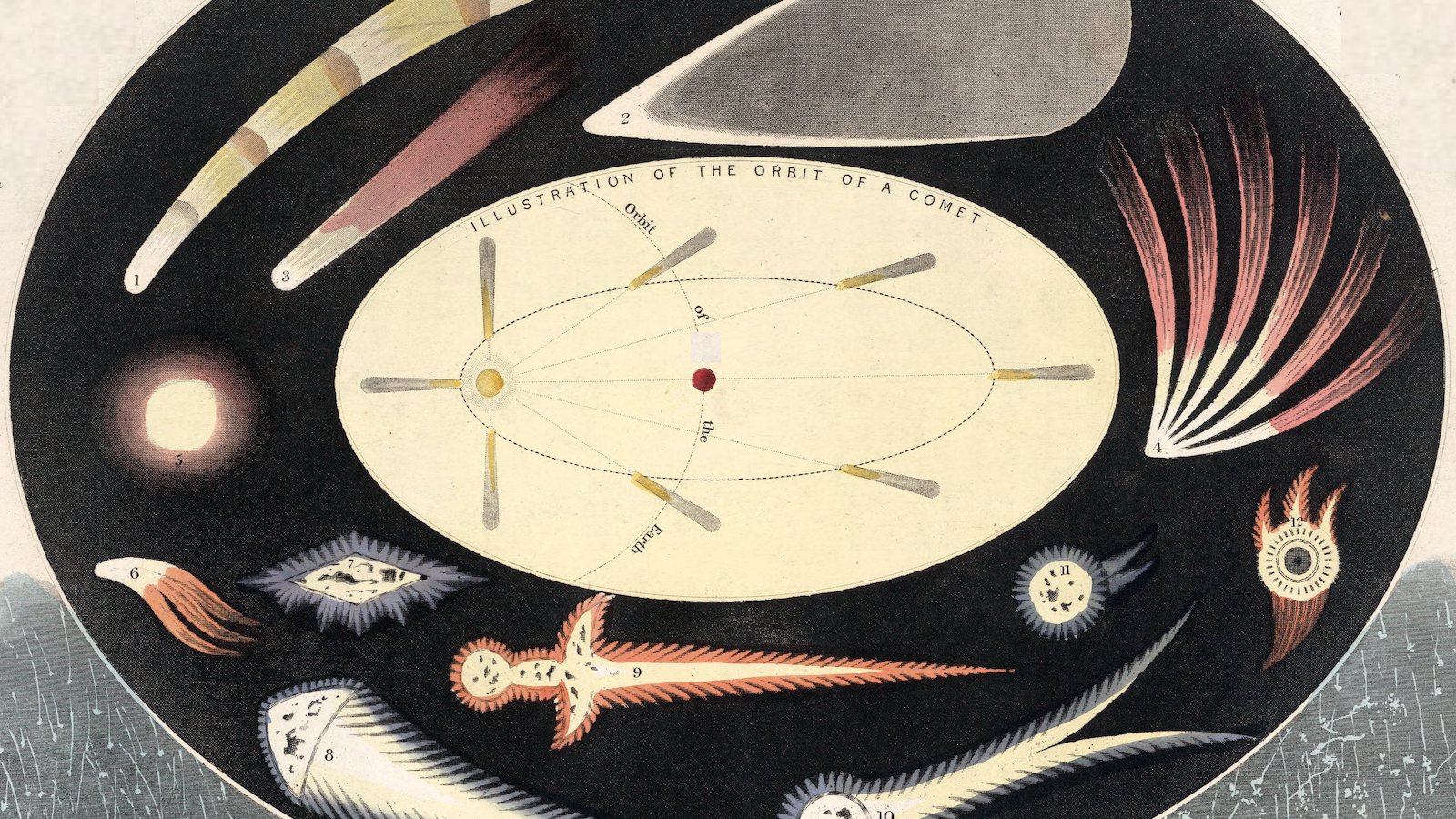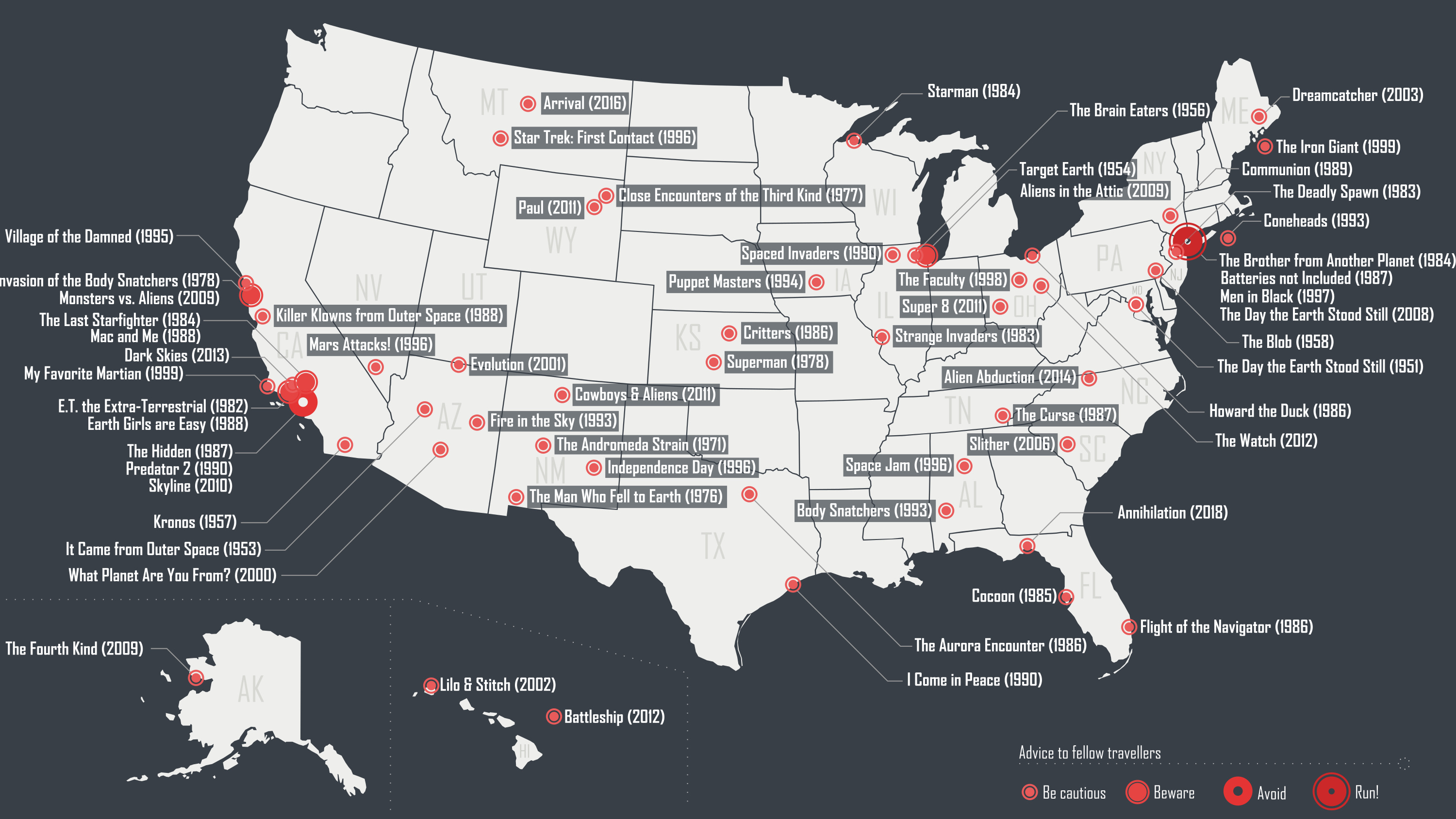New map shows all 85,000 volcanoes on Venus

- A new, detailed map shows the location of all 85,000 known volcanoes on Venus.
- It comes hot on the heels of the discovery of recent volcanic activity on the planet.
- Perhaps the map will revive interest in a planet once as “popular” as Mars.
Science killed our fascination with Venus. Can recent scientific discoveries reverse the process? This dazzling map, showing the planet’s 85,000 volcanoes, may be a start.
Venus is also known as “Earth’s twin.” It is very similar to our own in size and structure. But there are no billionaires lining up to colonize our nearest planetary neighbor. That’s because Venus is a particularly evil twin of Earth.

The second rock from the Sun is permanently enveloped in clouds. The mystery of what’s below that cover stoked the imagination of early science fiction writers, who variously portrayed Venus as a jungle planet, an ocean planet, or a desert world teeming with weird, dangerous, and (sometimes) intelligent life forms.
A steppingstone into outer space
For early-20th-century Earthlings eager to reach out into outer space, Venus was as popular a steppingstone as Mars. But that ended abruptly in the early 1960s, when the first Earth spacecraft pierced the planet’s permanent cloud cover.
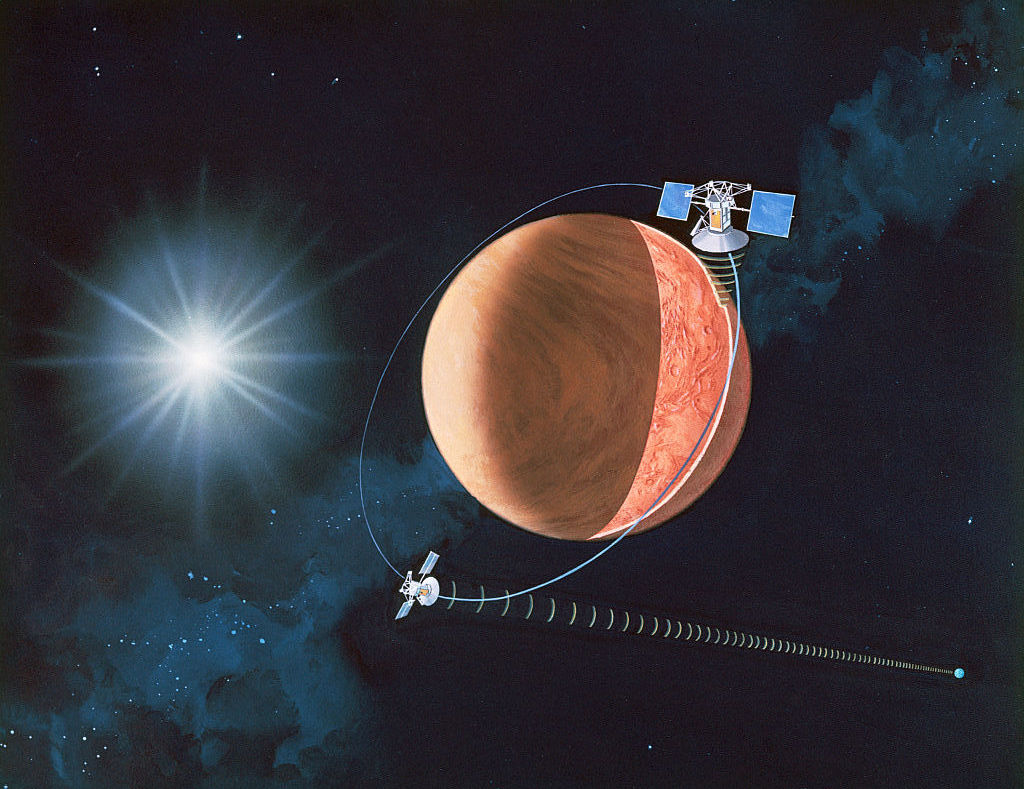
Here’s what our probes have taught us: Venus wants to boil, crush, and choke us. Its surface temperature is around 900°F (475°C). That’s enough to melt lead on Earth. And the local atmosphere is not just inhumanly hot but also unbearably dense: 90 times greater than ours at sea level, which is comparable to the pressure 1 mile (1.6 km) below our oceans.
Our Solar System’s hottest planet
The air is also thick with CO2 and sulphuric acid. That’s what generates the high-altitude clouds covering the entire planet, causing the runaway greenhouse effect that makes Venus the hottest planet in our solar system. Without those clouds (hovering at altitudes of 28 to 43 miles, or 45 to 70 km), the surface temperature would be only about 200°F (85°C). We’d still be dead, but at least our lead wouldn’t melt.
It’s all a far cry from the fantastic creatures and lush landscapes we once hoped to discover on Venus. But deadly isn’t quite the same as dead. Something stirs on the planet’s surface. This March, scientists excitedly revealed that they found direct evidence for recent volcanic activity on Venus.
That’s a first, not just for Venus, but for any other planet in the Solar System except our own Earth. (Until this discovery, we knew of only three other bodies in our system with recent volcanic activity: Io, a moon of Jupiter; Triton, a moon of Neptune; and Enceladus, a moon of Saturn).
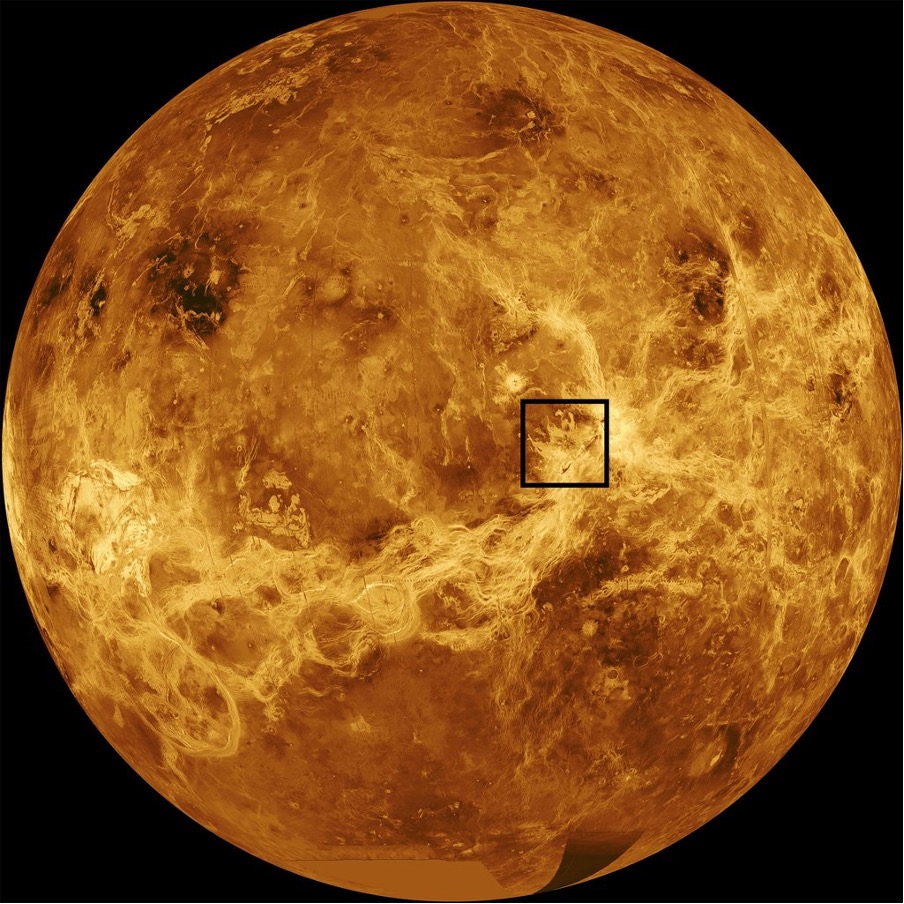
The discovery that Venus has an active volcano life was based on detailed study of Synthetic Aperture Radar (SAR) imagery taken by NASA’s Magellan mission, which flew by Venus in the early 1990s. The images show a volcanic vent that changed shape and size between February and October 1991. Moreover, in the second image, the deformed crater appeared to be brimming with lava. The vent is located in Atla Regio, an equatorial highland that contains Ozza and Maat, two of Venus’s largest volcanoes.
Volcanoes more than 60 miles wide
Magellan’s same SAR images have now been used to complete a new map of Venus, comprising not just all of the planet’s 85,000 volcanic “edifices,” but also showing how they’re clustered. The volcanoes come in a wide range of sizes, up to well over 60 miles (100 km) in diameter. However, 99% of Venus’ volcanoes are smaller than 3 miles (5 km) in diameter.
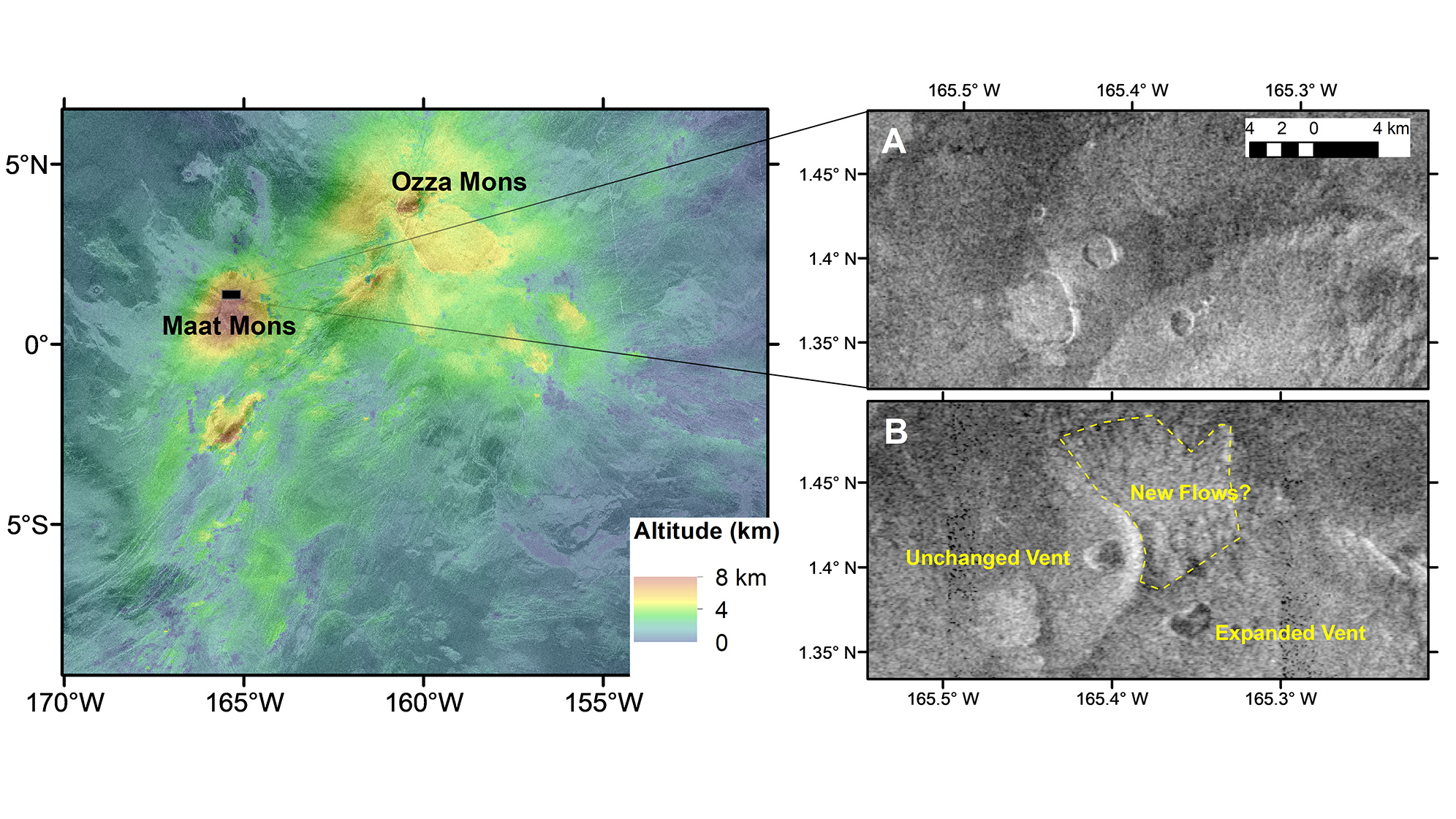
This new volcanic map will help answer some key questions about Venusian geology, including: Why doesn’t the planet have plate tectonics? Was it ever habitable? And possibly even: Which volcano will the next lava flow come from?
Comparing Venus and Earth volcanoes
So, how does the number of volcanoes on Venus compare to Earth? It’s like comparing apples to oranges. We know of around 1,350 potentially active volcanoes on Earth, but the ocean waves hide a fair number we have yet to include in that number. Venus, on the other hand, doesn’t have oceans to hide volcanoes, or weather to wear them down.
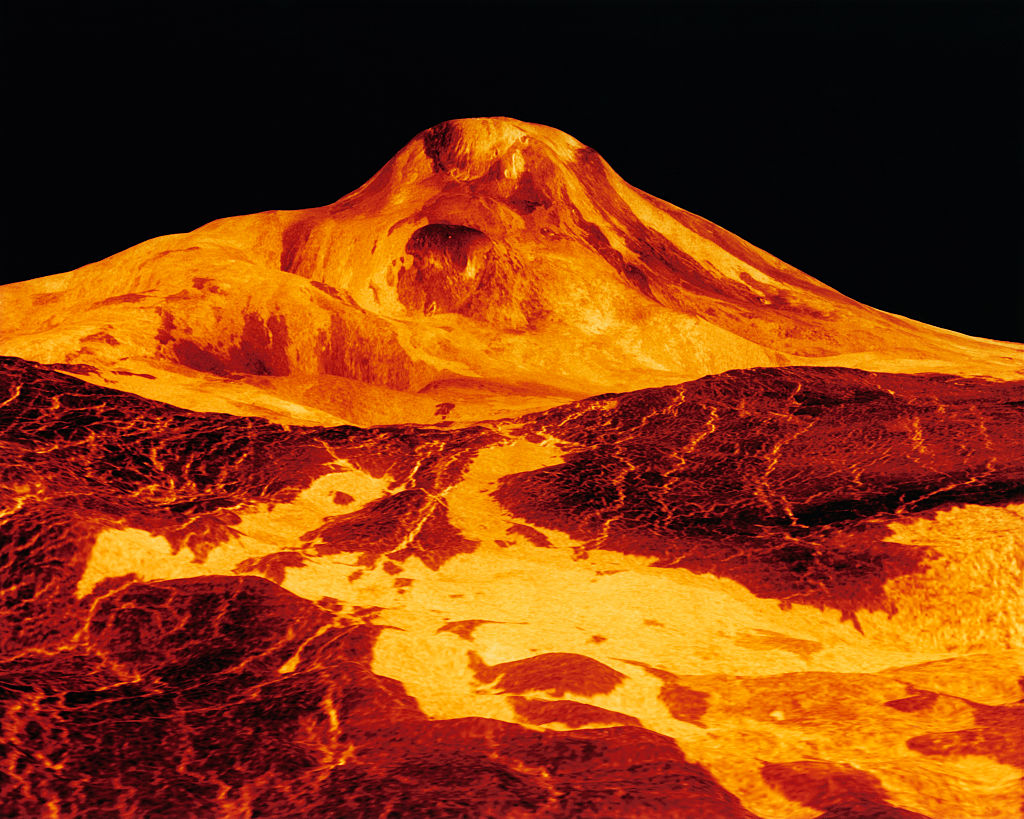
The map was compiled at Washington University in St. Louis by graduate student Rebecca Hahn, under the aegis of Paul Byrne, associate professor of Earth and planetary sciences. It provides researchers with a valuable database of volcanism on Venus.
“There seem to be relatively fewer volcanoes in the 12-60-mile (20-100-km) diameter range, which may be a function of magma availability and eruption rate,” Byrne and Hahn write in their research paper.
How 90s: data on CDs, delivered by mail
Compiling the map was “tedious” and took several years. It was helped by advances in mapping software, but hobbled by the fact that data from the 1990s Magellan mission was still stored on CDs, which were delivered by mail. The Venus volcanoes dataset is hosted at Washington University and publicly available online for other scientists.
A few other interesting facts about Earth’s “evil twin”:
- On Venus, the Sun rises in the west and sets in the east. Thats because unlike most other planets in our solar system, Venus rotates backward on it axis.
- A Venus day is longer than a Venus year. Because the planet rotates very slowly on its axis, one Venus day takes 243 Earth days. But Earth’s twin goes around the Sun much faster than us: in just 225 Earth days.
- On December 14, 1962, Venus became the first planet other than Earth to be explored by a spacecraft, when NASA’s Mariner 2 flew by and scanned the surface.
- Three new missions are scheduled for Venus. In 2027, NASA will launch VERITAS, its first mission to Venus since the 1990s. Later in the decade, NASA will send DAVINCI, which will drop a probe on the surface. ESA, the European Space Agency, plans to send EnVision.

Strange Maps #1202
Got a strange map? Let me know at strangemaps@gmail.com.
Follow Strange Maps on Twitter and Facebook.

